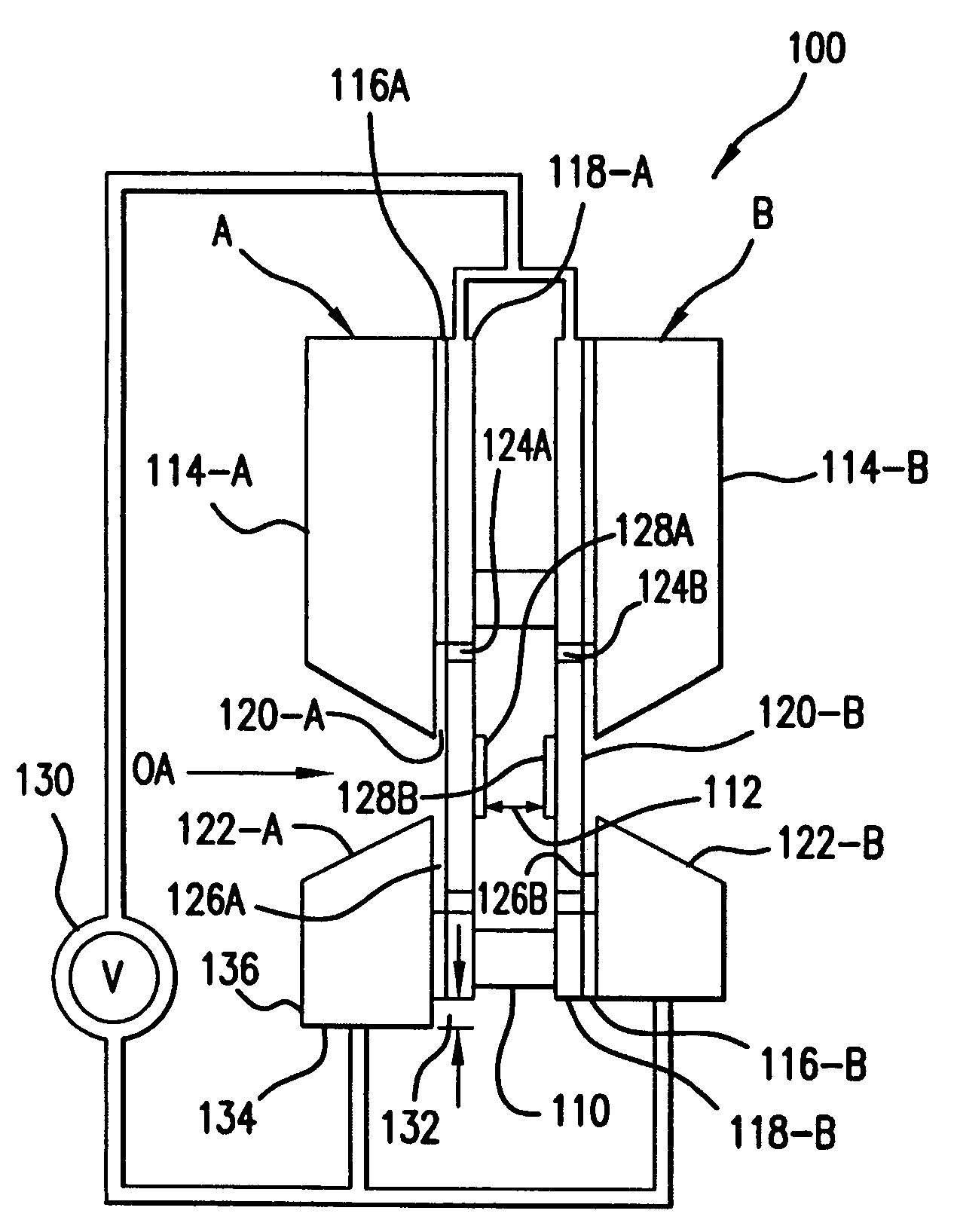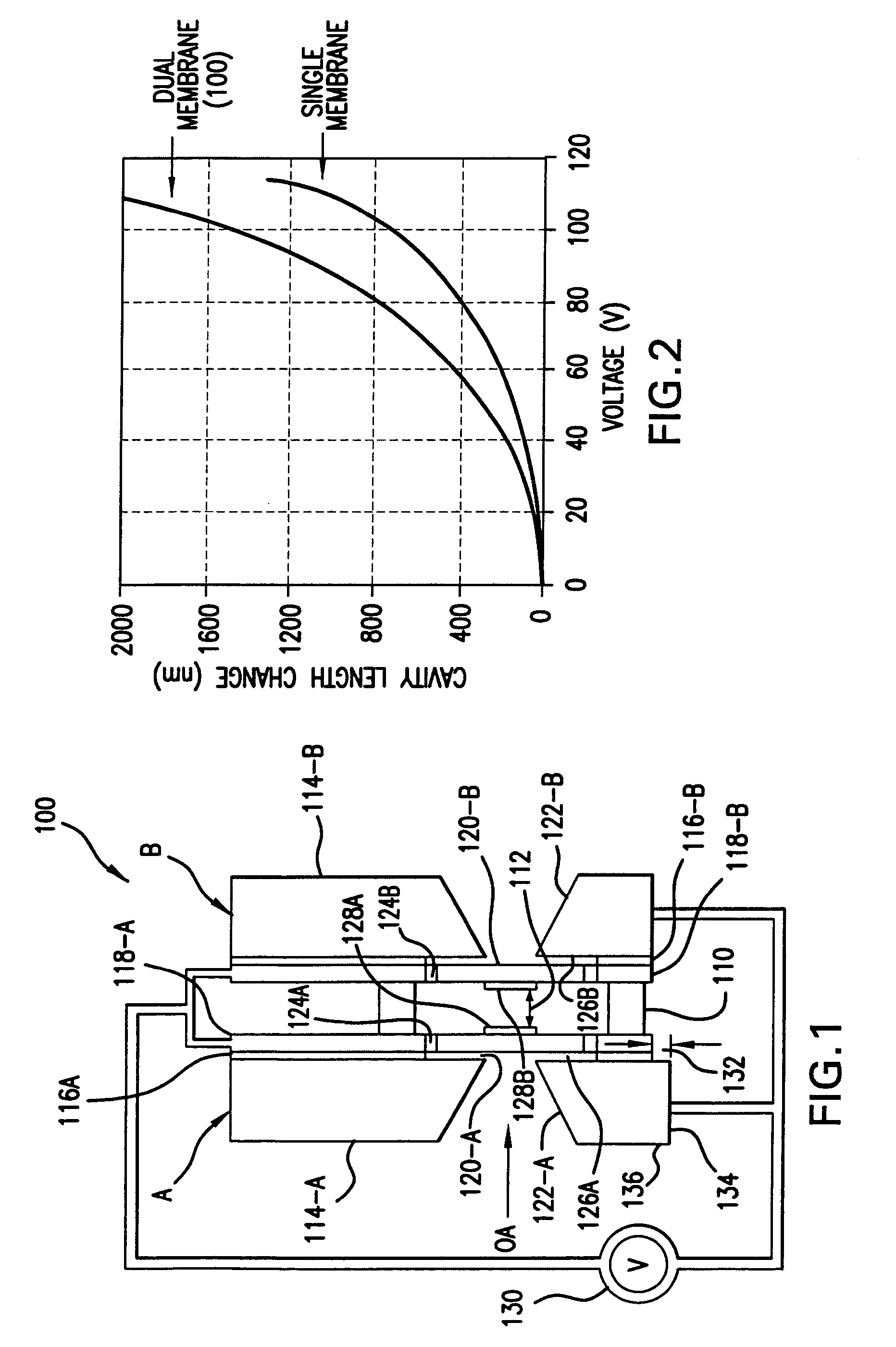Dual membrane single cavity Fabry-Perot MEMS filter
a fabry-perot mems filter and single cavity technology, applied in the field of dual membrane single cavity fabry-perot mems filter, can solve the problems of reducing the accuracy and precision of wavelength scan, spectral jitter of the passband, and reducing the accuracy of the wavelength scan, so as to achieve the effect of double the total deflection rang
- Summary
- Abstract
- Description
- Claims
- Application Information
AI Technical Summary
Benefits of technology
Problems solved by technology
Method used
Image
Examples
Embodiment Construction
[0018]FIG. 1 shows a dual membrane, single cavity tunable filter 100, which has been constructed according to the principles of the present invention.
[0019]In more detail, the tunable filter 100 comprises a first MEMS membrane device A and a second MEMS membrane device B. These two membrane devices A, B are installed facing each other. An intervening spacer 110 is used to define the optical cavity 112, between the mirror structures of each of these membrane devices A, B.
[0020]In the preferred embodiment, each of the membrane devices is based on the Flanders SOI MEMS membrane device. Specifically, each of the membrane devices A, B includes a handle wafer 114. (Note that the A and B designators after the reference numerals are used to indicate the corresponding membrane device.) A sacrificial oxide layer 116 is used to separate the handle wafer 114 from a device layer 118. A membrane 120 is fabricated in each of the membrane devices A, B by removing the sacrificial release layer 116 f...
PUM
 Login to View More
Login to View More Abstract
Description
Claims
Application Information
 Login to View More
Login to View More - R&D
- Intellectual Property
- Life Sciences
- Materials
- Tech Scout
- Unparalleled Data Quality
- Higher Quality Content
- 60% Fewer Hallucinations
Browse by: Latest US Patents, China's latest patents, Technical Efficacy Thesaurus, Application Domain, Technology Topic, Popular Technical Reports.
© 2025 PatSnap. All rights reserved.Legal|Privacy policy|Modern Slavery Act Transparency Statement|Sitemap|About US| Contact US: help@patsnap.com



